Telegraph Place
Having a crush on some long-gone San Francisco houses and wondering what happened to Good Children.
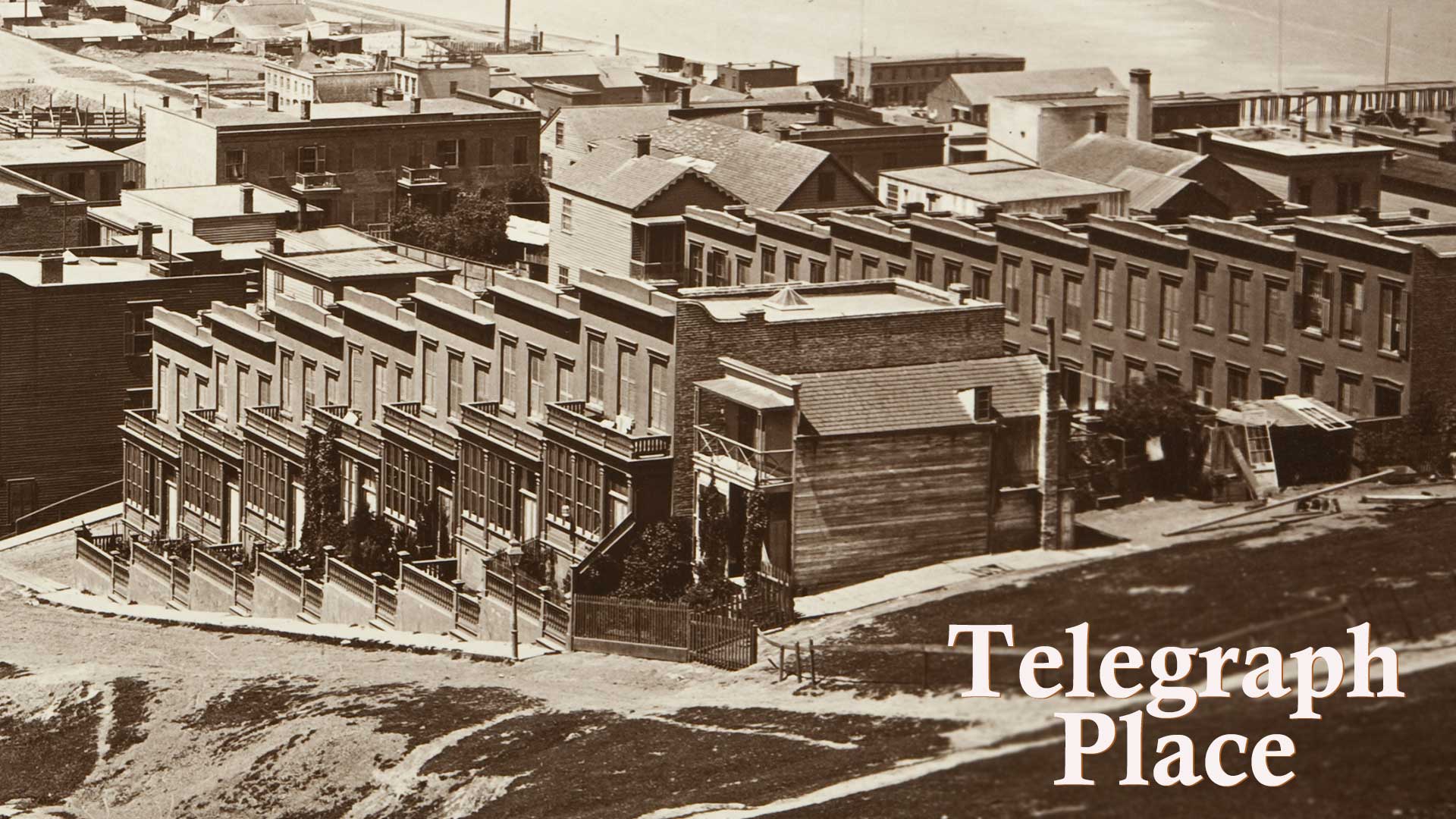
When you look at lot of old photos it’s easy to form attachments. I never met my great grandmother Ethel Neate Slinkey, who died more than a decade before I was born, but she’s very likable in frozen photographic form.

No one who remembers her has said she wasn’t likeable, so that makes it easy.
At Western Neighborhoods Project (WNP), David Gallagher (F.O.W.) and I each had our crushes on particular people we’d see in old albums or snapshots. I know current WNP executive director Nicole Meldahl indulges as well. In her exhibit, HER(E), displayed on Great Highway light poles in 2024, Nicole elevated unidentified women in the OpenSFHistory collection “who felt like kin.”
My confession is I can also fall in love with buildings, even those lost more than a century ago.
Let me give you an example by starting with one of Carleton Watkins’ amazing “mammoth plate” photographs, one he took from Telegraph Hill about 1863 or 1864. I’ll add some labels to orient you:
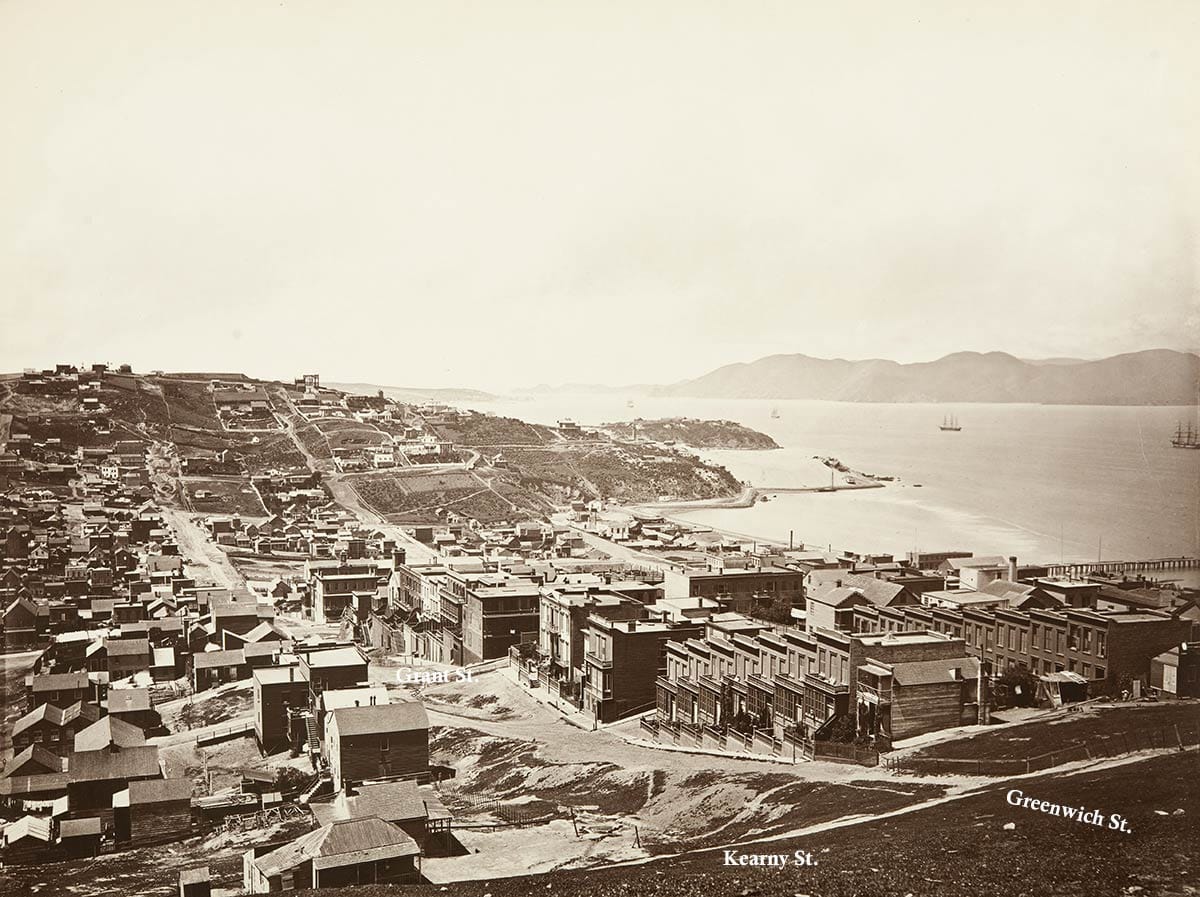
There are one billion things to look at and point out in this photo, including the original north beach of North Beach. But let us focus on one of my favorite old-building infatuations, this double-line of row houses almost at the top of Greenwich Street:
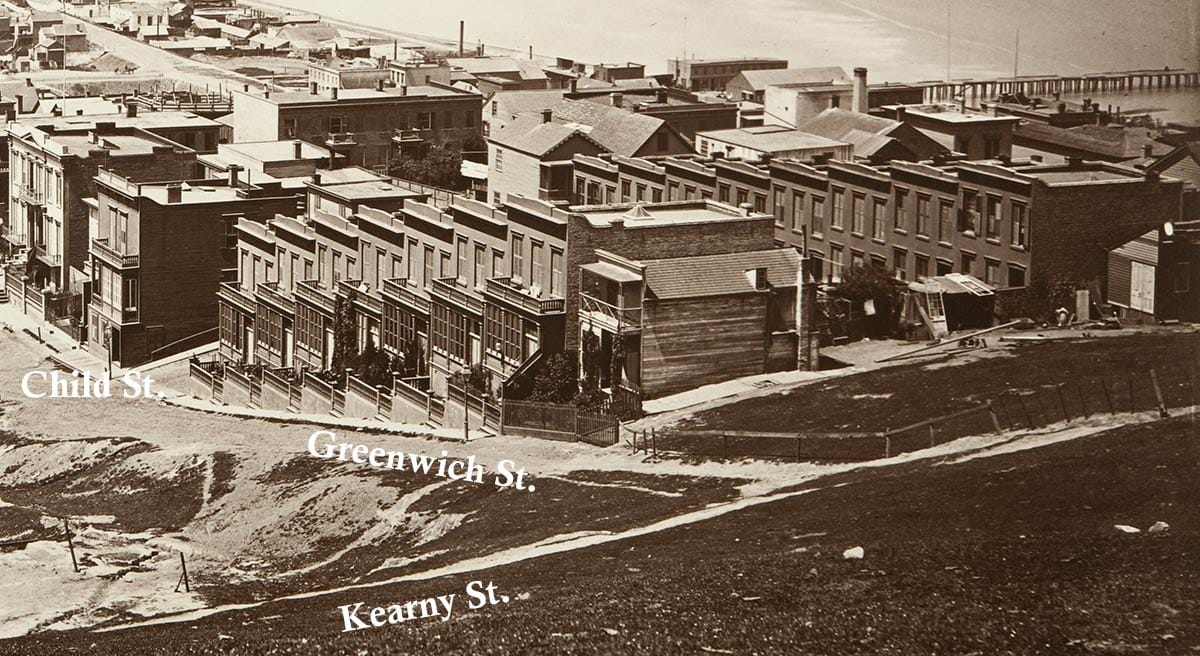
So cute! Little sun porches and enclosed yards in front of each of the Greenwich Street houses, while the mostly matching back row settles for recessed entry doorways.
What is up with these? They don’t feel familiar to our San Francisco. They are more like an English terrace development or a neighborhood in antebellum Baltimore.
Official grades of some of these Telegraph Hill blocks had just been determined by the city in 1862 and you can see how many properties found themselves either stranded way up over the sidewalks or left in a gully below the new street level.
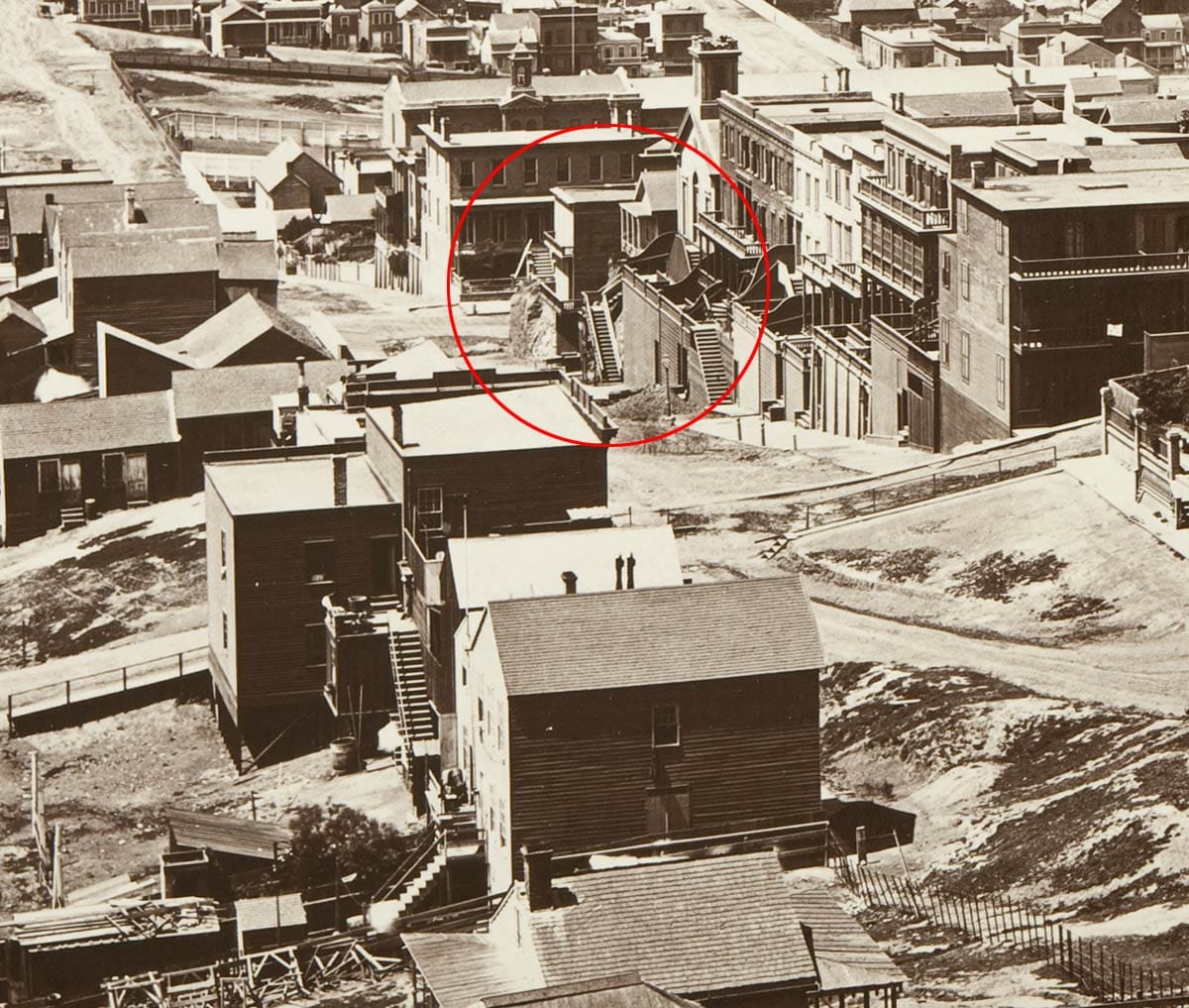
Since my cute block is pretty well aligned with the new sidewalk and city street lamps I guess the development is relatively new, perhaps constructed just a year or two before the photograph. But that ivy going crazy on the middle cottage might push their birth date back to the last year or two of the 1850s:
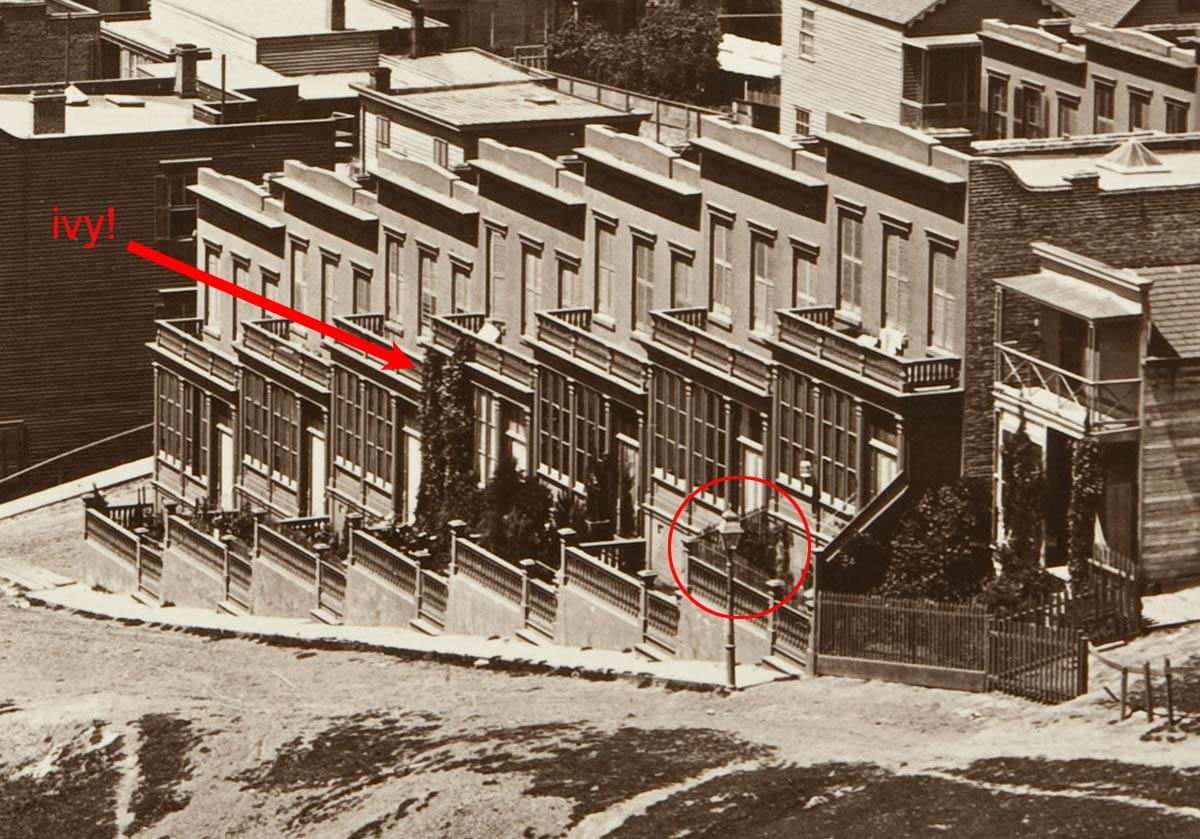
The reason the two rows of identical cottages look so close to each other is that they are, thanks to two alleys you may never have heard of, making with Greenwich Street a tuning-fork or vice-grip street plan:
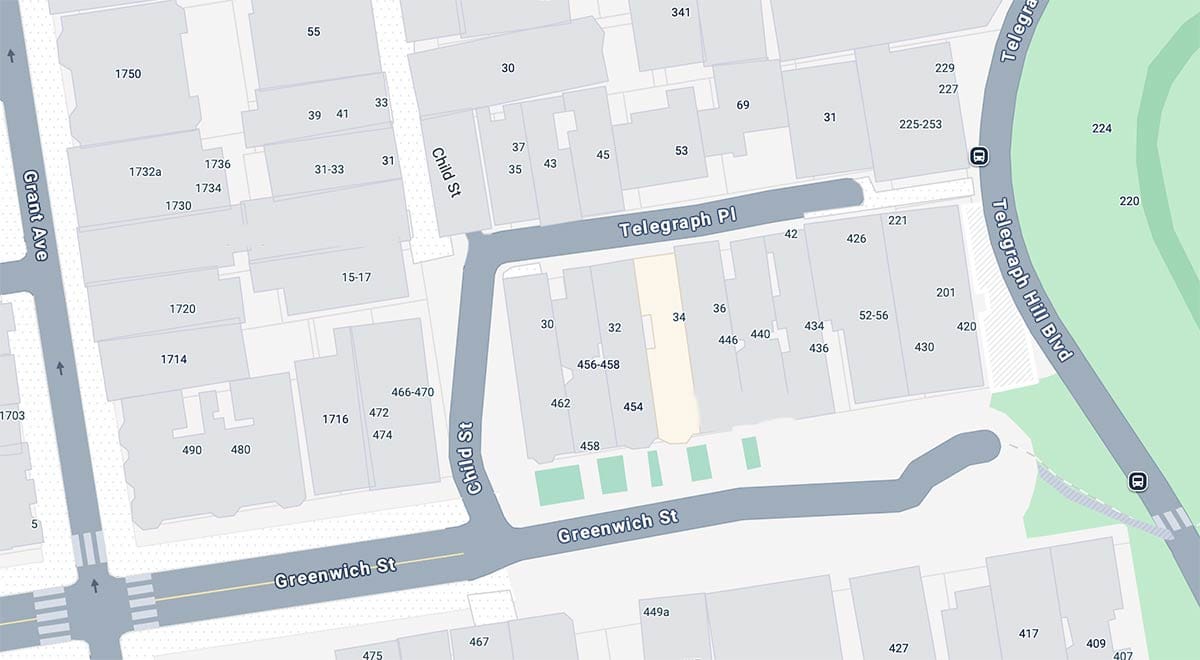
Both Telegraph Place and Child Street date back to the first dozen years of San Francisco’s existence and it is probably the little row houses we can credit for the creation of Telegraph Place on the city’s map. Both alleys still have houses on them today, but nothing as matchy-matchy as the old row houses.
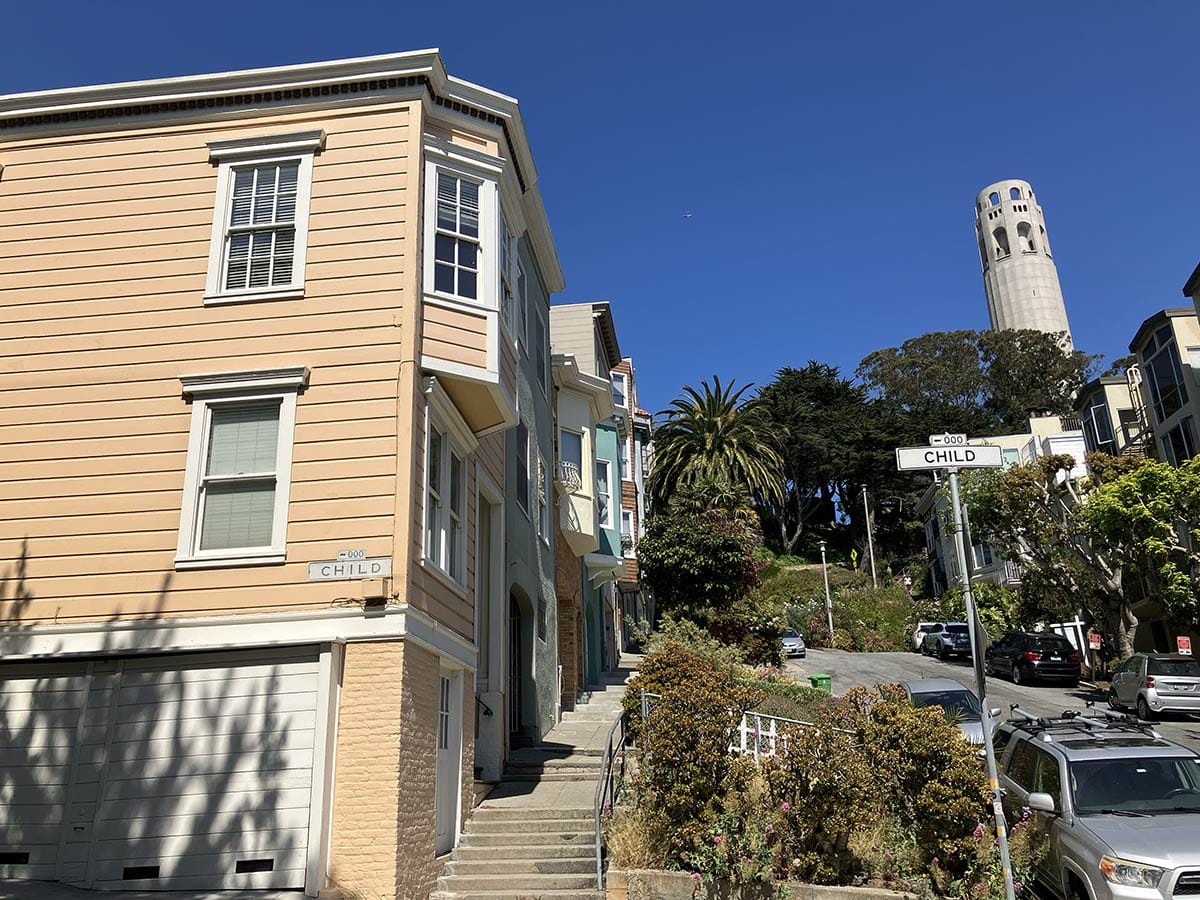
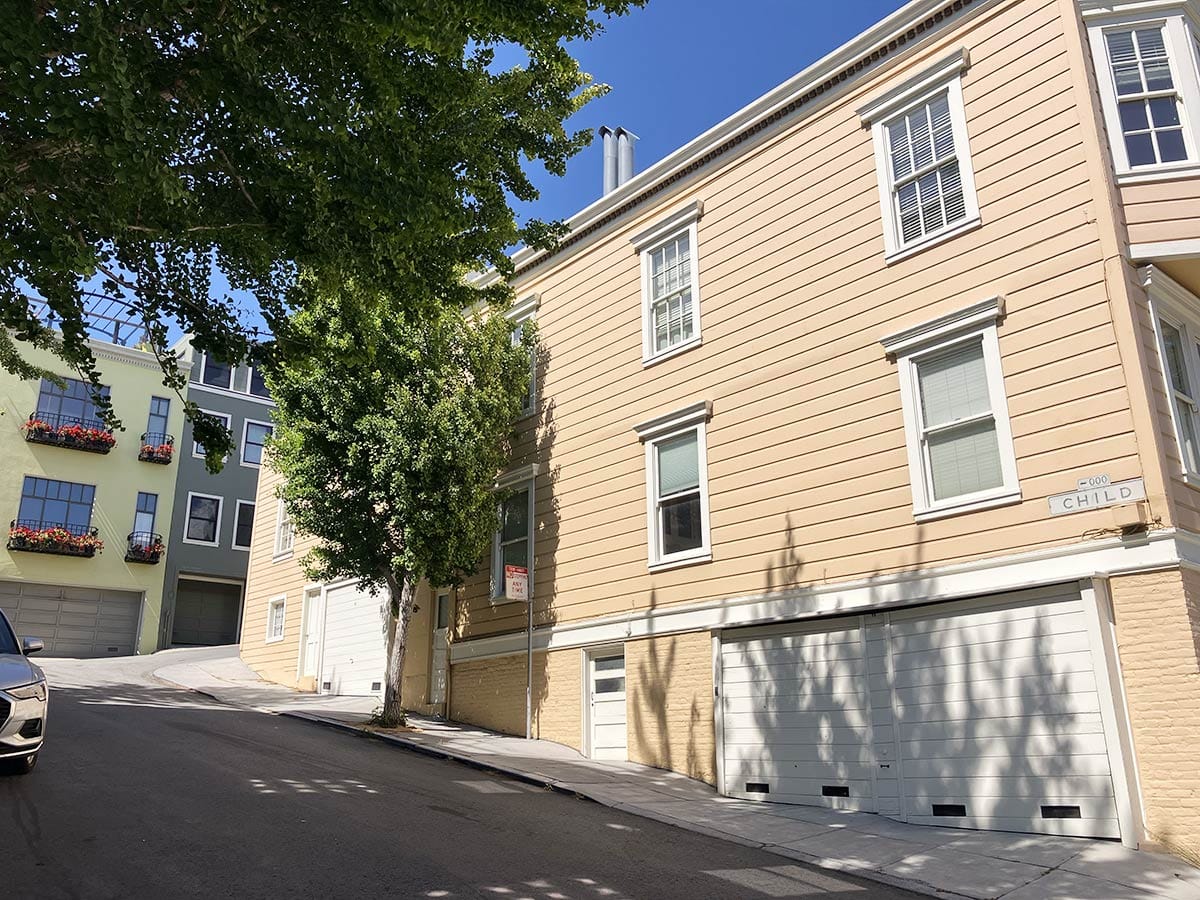
As far as I can figure out, in the 1850s someone bought a sixth of Block 81 in the seminal “Fifty Vara” survey of San Francisco and tried to maximize their investment by breaking the 137.5-by-137.5-foot-square into 15 little lots, seven on Greenwich Street and eight just behind. This detail from an 1894 “block book” will give you the idea:
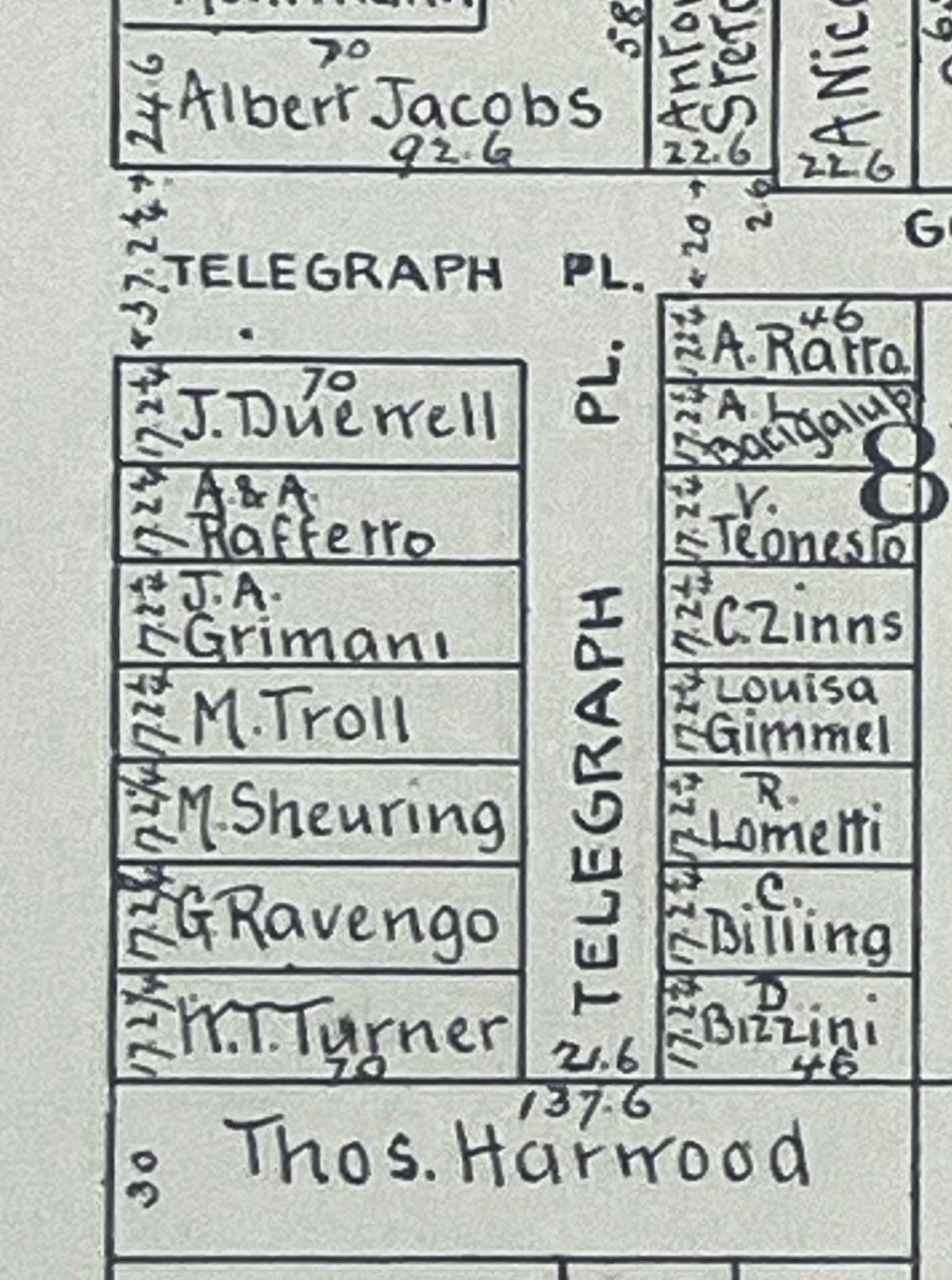
To reach those eight units in the back (~17-feet-by-46-foot lots) the Telegraph Place alley, needed to be carved out of the parcel. Today’s Child Street will get you through the whole block from Greenwich to Lombard streets (although really only if you are on foot), but Telegraph Place is just a mid-block access stub.
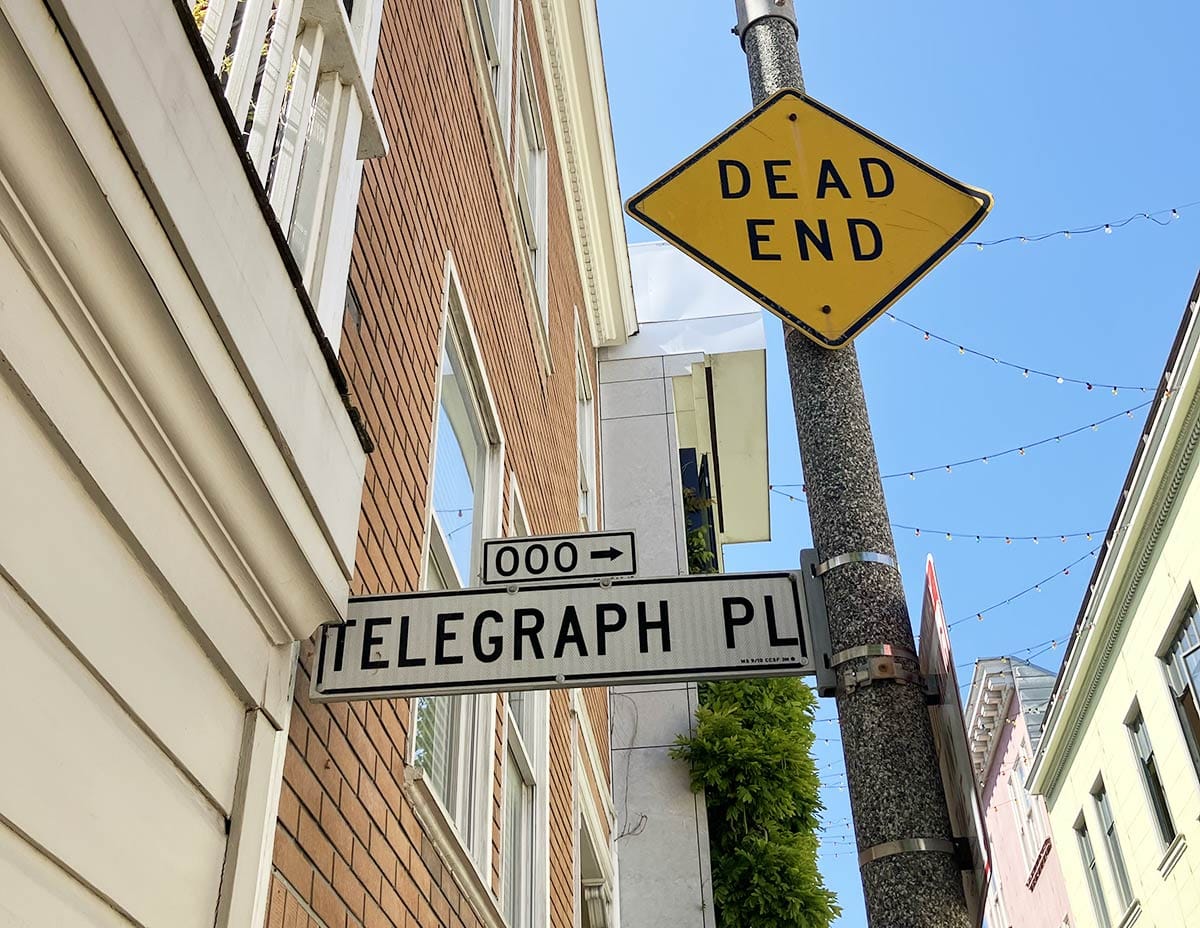
While the original idea could have been rentals, by the time of the printing of the 1894 block book, the 15 cottages had 15 different owners. I am very tempted to do some deep research on those names, but I am kinda swamped right now. Perhaps a future project.
Because the top of Telegraph Hill was the nineteenth century version of “Instagrammable,” the Telegraph Place row houses, at least those lined up on Greenwich Street proper, showed up in a number of photographs as the city grew.
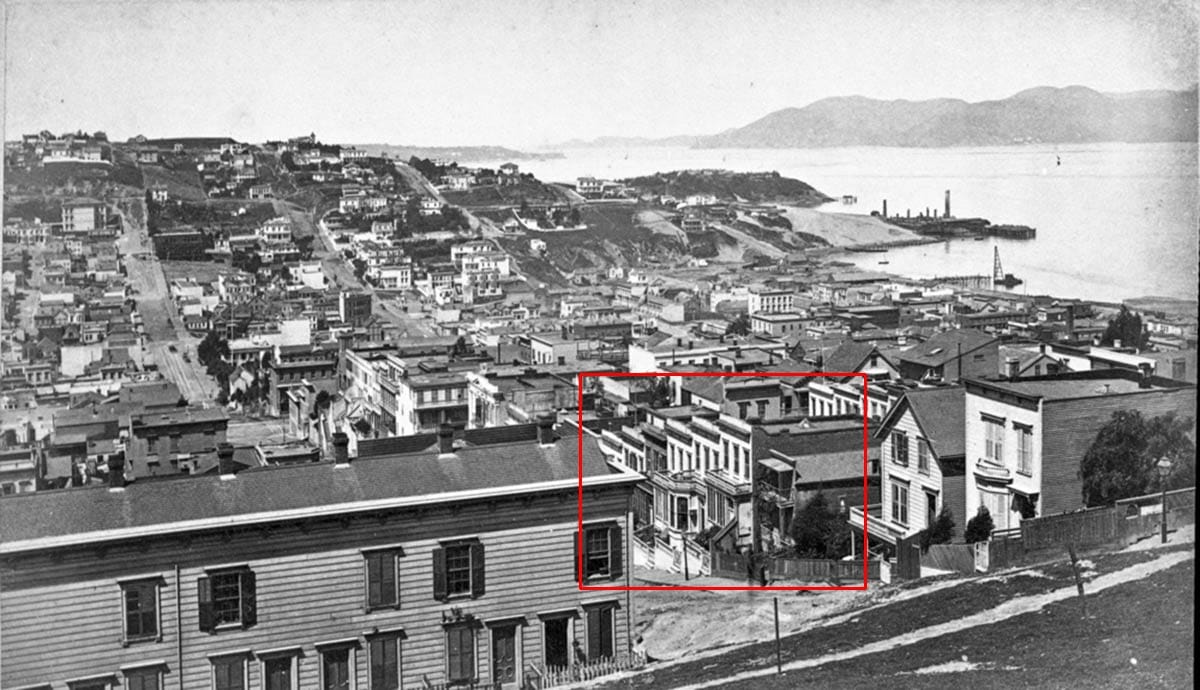
Below, our houses are on the left in this photograph showing the weird and short-lived funicular cable car that once ran up Greenwich Street (Read more about it and the hill-topping “castle” it ran up to.)
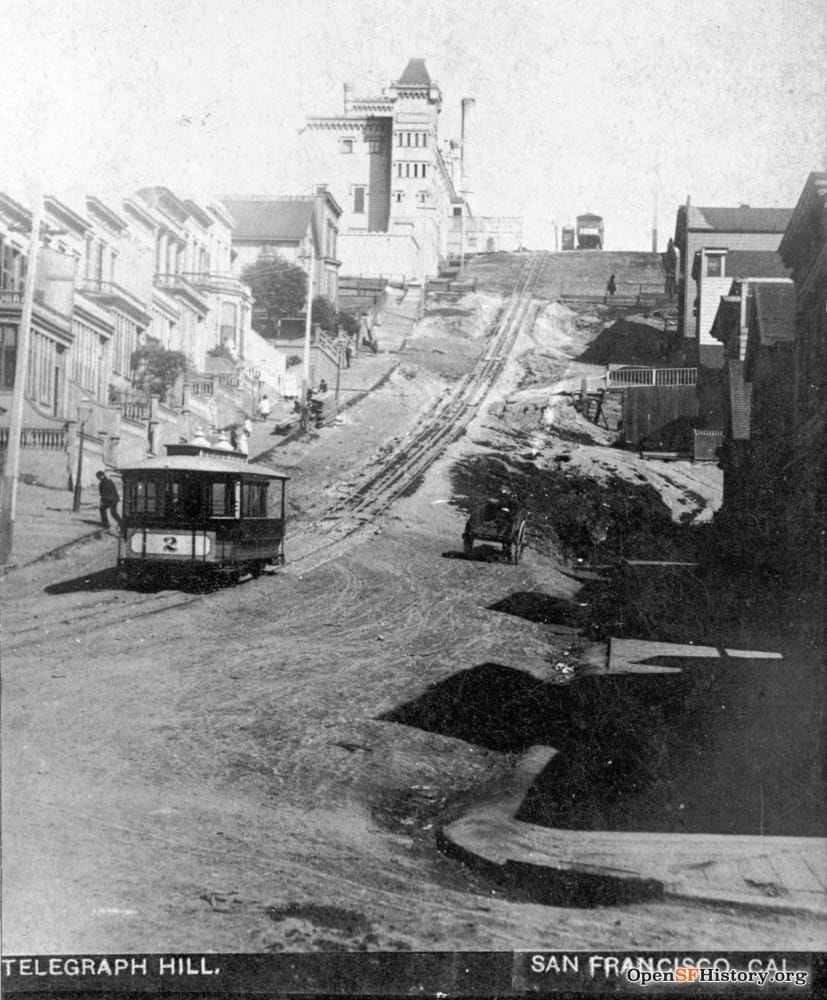
Good Children
Telegraph Place likely received its hill-reference name from the creator of the 15-house development. The first reference I have found for it looking through city directories and newspapers dates to 1860, which tracks well with my guess on the building date of the row houses. But where did Child Street come from?
At first, I thought it was probable that Child was a surname rather than having some juvenile connection, but I quickly discovered that as early as 1855 and into the early twentieth century the alleyway was named “Good Children Street” Here is its entirety represented in a 1906 block book:
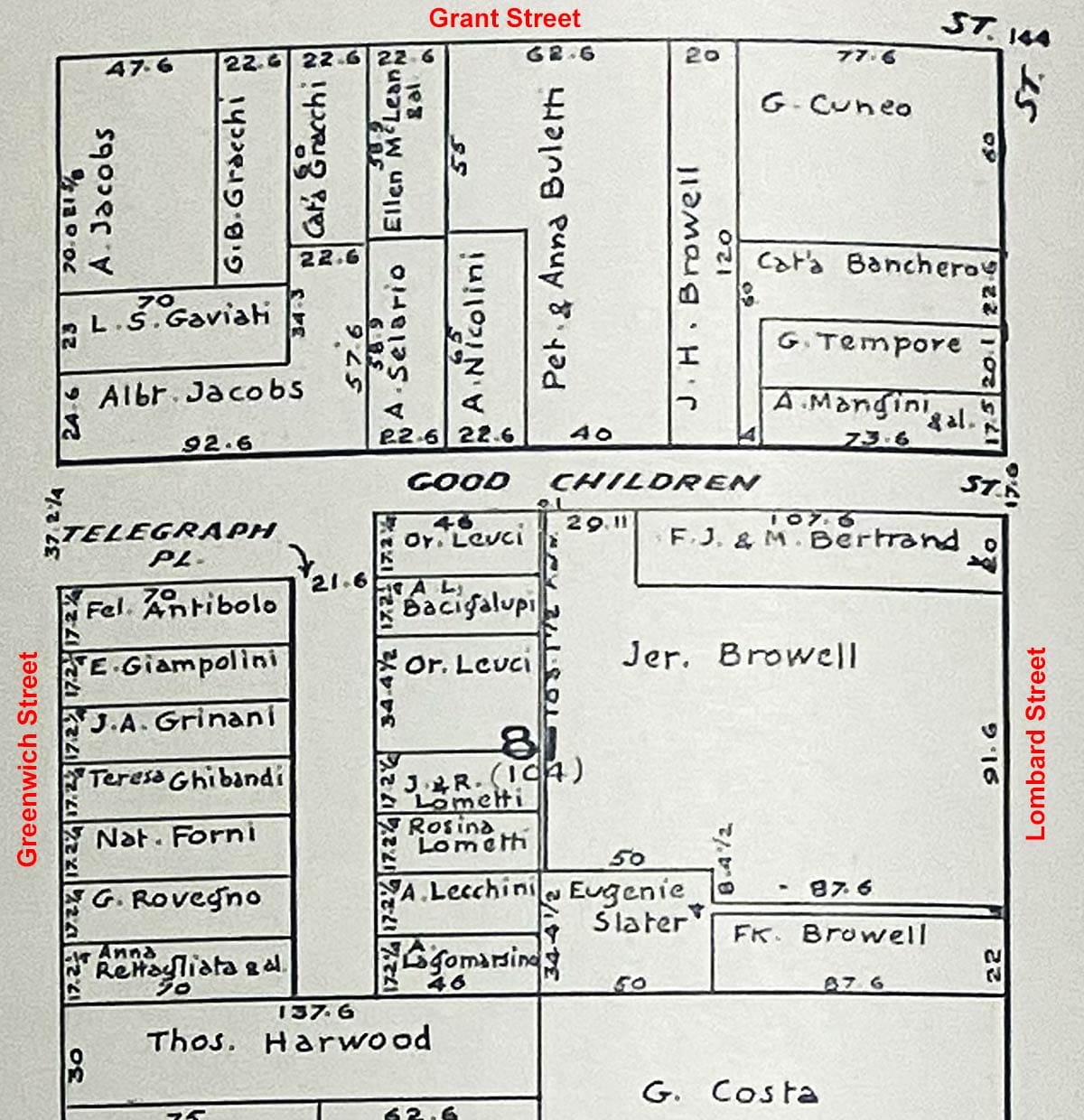
Wishful thinking from a family on the block? Some biblical reference? I know of no early orphanage or school or other kid-focused institution or endeavor around that section of Telegraph Hill. New Orleans’ French Quarter used to have a Rue des Bon Enfants (now named St. Claude Avenue), so maybe it came from there somehow.
As far back as 1888, newspaper writers doing features on street names had fun with the Good Children alley. A sample:
“…a singular and interesting fact in connection with the name is that not a window in the row of houses remains unbroken! Hordes of children inhabit the oddly named quarter, but whether the name was inappropriate when bestowed or whether it is the present generation alone that has proved itself unworthy of the name is a question for surmise.”
Good Children Street eventually became the neutral and singular Child Street. If less aspirational, maybe it sounded less judgy.
The change came during the City of San Francisco’s big name-clean-up in 1909. Most of the city had been incinerated by fires following the 1906 earthquake, so it seemed the right time to address inconsistencies, duplication, and odd denominations on the San Francisco map.
The earthquake and fire also meant the end of my little row houses. Perhaps the last image of them is below, courtesy of J. B. Monaco. The photographer pulled at post-disaster heart strings with his view of ruins, a mother, and an undoubtedly good child.
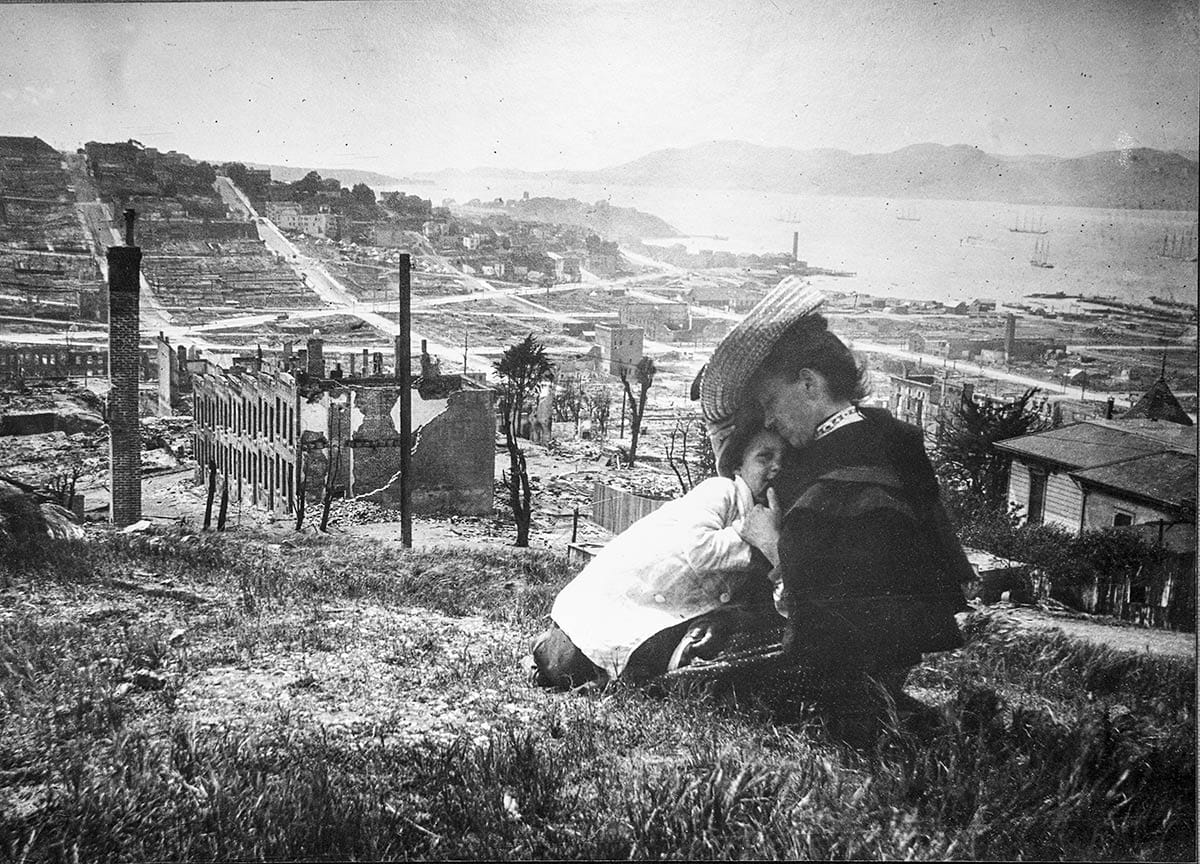
Woody Beer and Coffee Fund
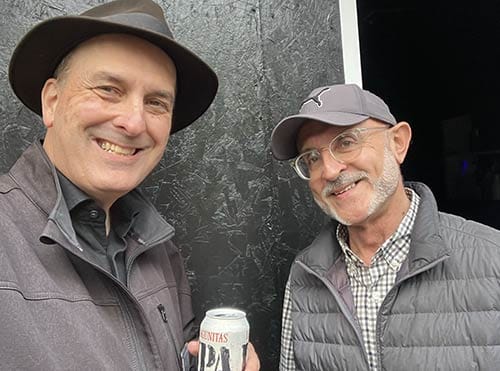
My calendar is all a mess. Do we have a coffee or beer meeting scheduled? You know folks have already paid for our enjoyment through the not-an-official charity-but-perhaps better Woody Beer and Coffee Fund. (You are welcome to chip in, but only if you are feeling the vibe.)
Let me know!
Sources
“Street Names,” San Francisco Chronicle, September 23, 1888, pg. 8.
“Lights and Shadows in the Work of the Letter Carrier,” San Francisco Chronicle, April 19, 1903, pg. 4.
“In Good Children Street the Windows are Smashed,” San Francisco Chronicle, February 26, 1905, pg. 5.

